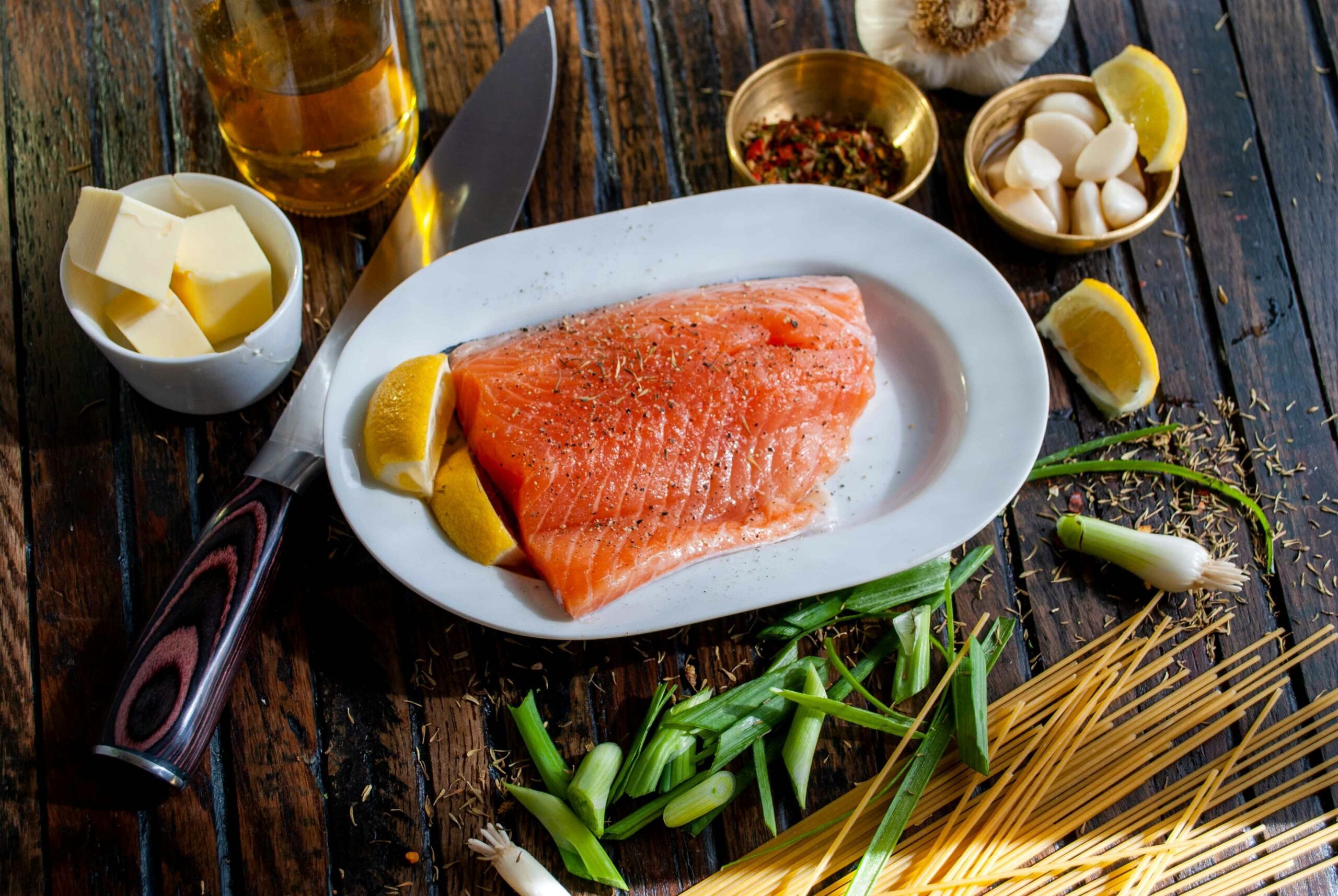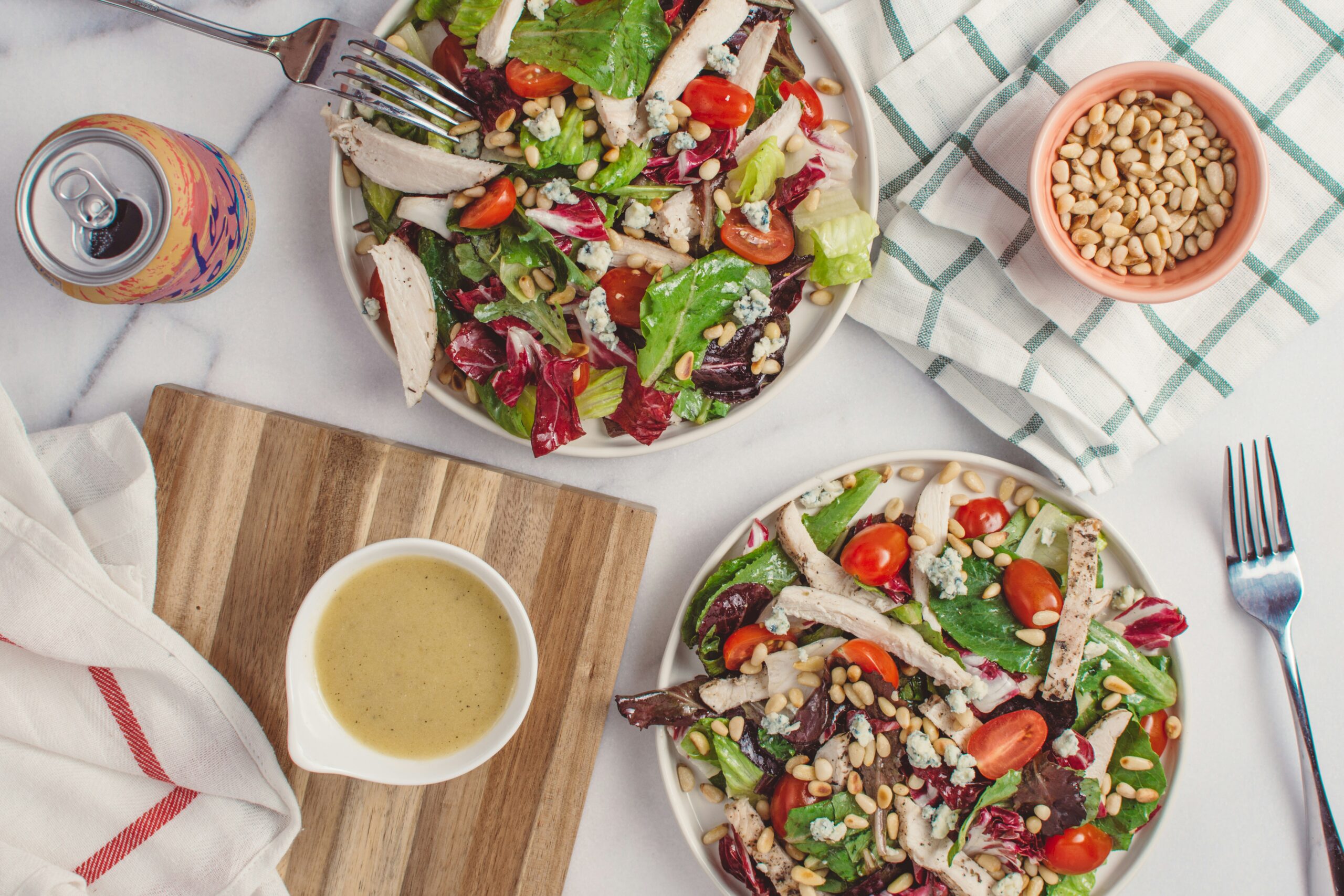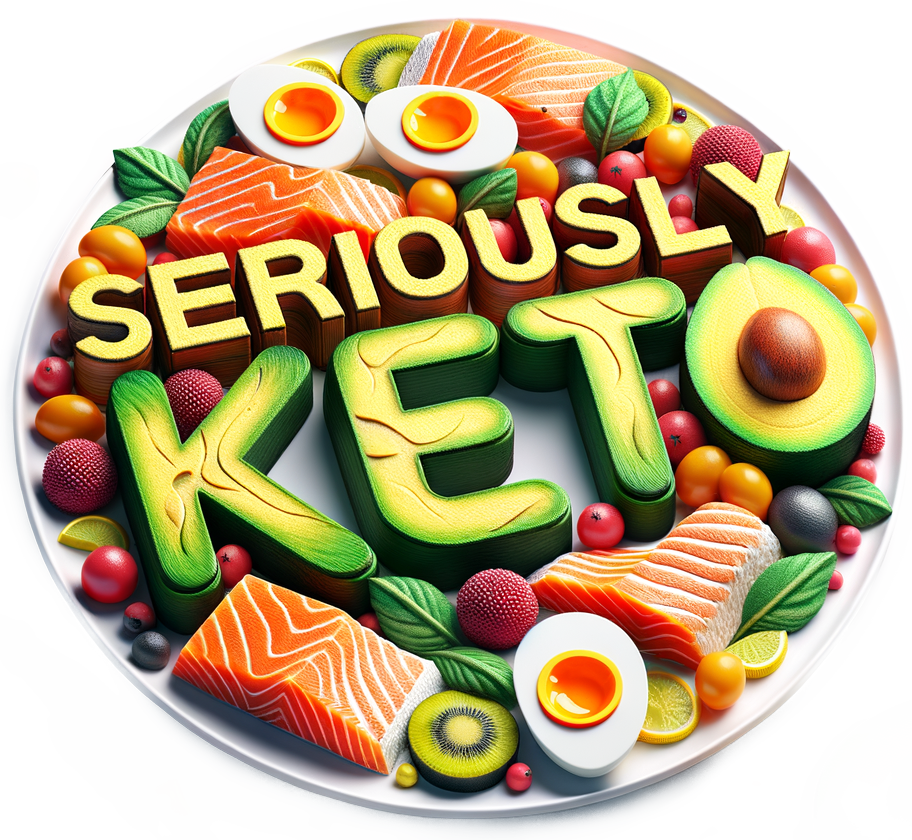Craving junk food while on a keto diet? Don’t worry, you don’t have to completely give up your guilty pleasures. Contrary to popular belief, there are a few surprisingly delicious options that can satisfy your cravings without ditching your low-carb eating plan. From crispy cheese chips to mouthwatering bacon-wrapped treats, we’ll take you through some of the best junk food choices that fit seamlessly into your keto lifestyle. Get ready to indulge guilt-free!

Understanding Ketogenic Diet
Basic principles of the ketogenic diet
The ketogenic diet, commonly known as the keto diet, is a low-carb, high-fat diet that has gained popularity for its potential health benefits. The basic principle of the ketogenic diet is to drastically reduce your carbohydrate intake and replace it with fats. By doing so, your body enters a metabolic state called ketosis, where it becomes incredibly efficient at burning fats for energy.
Health benefits of a ketogenic diet
There are numerous health benefits associated with following a ketogenic diet. One of the primary benefits is weight loss. By restricting carbohydrates, the body starts using stored fats as its primary source of fuel, leading to significant weight loss. Additionally, the keto diet has been found to improve insulin sensitivity, lower blood sugar levels, and even reduce the risk of developing certain chronic diseases, such as heart disease and type 2 diabetes.
Potential drawbacks of a ketogenic diet
While the ketogenic diet has its advantages, it’s important to acknowledge that there are potential drawbacks as well. One of the main concerns is the initial adjustment period, often referred to as the “keto flu.” During this phase, some individuals may experience symptoms like fatigue, headaches, and nausea as their bodies adapt to the dietary changes. Another potential drawback is the restrictive nature of the diet, which can make it challenging to incorporate a wide variety of food choices. Additionally, long-term adherence to a ketogenic diet may require careful planning to ensure you’re getting all the necessary nutrients.
What is Junk Food?
Defining junk food
Junk food generally refers to highly processed foods that are typically high in calories, unhealthy fats, sugar, and sodium, while lacking in essential nutrients. These foods are often convenient and readily available, tempting us with their delicious flavors and textures. Examples of junk food include fast food burgers, sugary drinks, candy bars, and chips.
Potential health implications of consuming junk food
Regular consumption of junk food can have significant negative effects on your health. These foods are often high in unhealthy fats, which can contribute to weight gain and increase the risk of developing conditions such as obesity and heart disease. The excessive amounts of sugar found in junk food can lead to dental problems and increase the risk of developing conditions like type 2 diabetes. Additionally, the high sodium content in many junk foods can lead to elevated blood pressure and an increased risk of heart disease.
Junk food and the modern diet
In today’s fast-paced world, junk food has become a significant part of the modern diet. The convenience and affordability of junk food make it a popular choice for many individuals. Unfortunately, the excessive consumption of junk food can lead to a host of health issues. However, with the rising popularity of low-carb diets like the ketogenic diet, individuals are discovering alternatives that allow them to enjoy some of their favorite junk foods without compromising their dietary goals.
Keto-friendly Junk Food Options
Low carb chips
Craving the satisfying crunch of potato chips? There are several low carb alternatives available that allow you to indulge without derailing your keto diet. These chips are often made from ingredients like cheese, almond flour, or other low-carb flours. They provide a satisfying crunch while being significantly lower in carbohydrates compared to traditional potato chips.
Sugar-free chocolate bars
If you have a sweet tooth but are following a ketogenic diet, sugar-free chocolate bars can be a game-changer. These chocolate bars are typically sweetened with sugar substitutes such as stevia or erythritol, making them low in carbohydrates. You can find a variety of flavors to choose from, allowing you to enjoy the decadence of chocolate while staying within your keto guidelines.
Pork rinds
Pork rinds, also known as chicharrones, are a popular keto-friendly snack option. They are made from fried or roasted pork skin, giving them a light and crispy texture. Pork rinds are high in protein, low in carbohydrates, and contain zero carbs, making them a perfect choice for satisfying those crunchy snack cravings.
Low Carb Pizza
What makes a pizza low carb
Traditional pizza is often loaded with carbohydrates due to the crust, which is typically made from refined flour. In a low carb pizza, the crust is substituted with a combination of ingredients such as almond flour, coconut flour, or cauliflower, which are lower in carbohydrates. This allows individuals following a ketogenic diet to enjoy the flavors of pizza without the guilt of consuming excessive carbs.
Different types of low carb pizzas
There are several variations of low carb pizzas that you can try. Some popular options include cauliflower crust pizza, which uses cauliflower rice as the base, and fathead pizza, which uses a combination of almond flour and mozzarella cheese for the crust. Additionally, zucchini or eggplant can be used as a vegetable-based crust alternative.
How to make your own low carb pizzas at home
Making your own low carb pizza at home is easier than you might think. Start by choosing a low-carb crust option such as cauliflower, almond flour, or a vegetable base. Mix the ingredients according to the recipe instructions and shape the dough into a crust. Add your desired sauce, toppings, and cheese, and bake in the oven until the cheese is melted and the crust is crispy. You can customize your pizza with a variety of keto-friendly toppings such as cheese, vegetables, meats, and low-sugar tomato sauce.

The Magic of Cheese
Why cheese can be keto-friendly
Cheese is a highly versatile food that can be incorporated into a ketogenic diet for several reasons. Firstly, cheese is generally low in carbohydrates and high in fat, making it an excellent option for individuals following a low carb, high-fat diet. Secondly, cheese is a good source of protein, which is essential for maintaining muscle mass and supporting overall health. Finally, cheese is packed with important vitamins and minerals, such as calcium, phosphorus, and vitamin A.
Different types of cheeses you can incorporate into your diet
There is a wide variety of cheeses available that you can enjoy on a ketogenic diet. Some popular options include cheddar, mozzarella, feta, goat cheese, and cream cheese. Each type of cheese has its own unique flavor and texture, allowing you to experiment and find your favorites. Whether you prefer soft cheeses, aged cheeses, or even blue cheeses, there is a cheese out there to suit every taste.
Recipes using cheese as a primary ingredient
Cheese can be the star of many delicious keto-friendly recipes. From cheesy cauliflower casseroles to crispy cheese chips, there are countless ways to incorporate cheese into your meals. One popular recipe is a keto-friendly cheeseburger casserole, where ground beef is mixed with cheese, pickles, and other toppings to create a flavorful and satisfying dish. Additionally, you can make cheese crisps by baking small portions of shredded cheese until they turn golden and crispy.
Keto Ice Cream
What makes ice cream keto-friendly
Traditional ice cream is typically high in sugar and carbohydrates, making it off-limits on a ketogenic diet. However, there are several keto-friendly alternatives available that make it possible to indulge in ice cream without compromising your dietary goals. Keto ice cream is typically made with low-carb sweeteners and alternative ingredients such as coconut or almond milk, which lower the carbohydrate content while still providing a creamy and delicious treat.
Commercially available keto ice creams
In recent years, the popularity of the ketogenic diet has led to an increase in commercially available keto ice creams. These ice creams are specifically formulated to be low in carbohydrates while still offering a wide range of flavors and textures. They often use ingredients like sugar alcohols or natural sweeteners to provide sweetness without the added sugars.
Different recipes for making your own keto ice cream
If you prefer a more personalized touch, making your own keto ice cream at home is a fantastic option. There are numerous recipes available that use ingredients such as heavy cream, unsweetened almond milk, and keto-friendly sweeteners. By adding flavors such as vanilla extract, cocoa powder, or fresh berries, you can create a variety of delicious ice cream flavors without the guilt of consuming excessive carbohydrates.

Sugar Substitutes in Keto
Different types of sugar substitutes
When following a ketogenic diet, finding suitable sugar substitutes is crucial for satisfying your sweet tooth without disrupting ketosis. There are various types of sugar substitutes available, including natural options like stevia, erythritol, and monk fruit, as well as artificial sweeteners like sucralose and aspartame. It’s important to experiment with different substitutes to find the one that suits your taste preferences and doesn’t cause any digestive issues.
Potential benefits and drawbacks of each
Each sugar substitute has its own benefits and drawbacks. Natural sweeteners like stevia and erythritol are considered safe and have no impact on blood sugar levels, making them ideal for keto diets. However, some people may experience a cooling sensation or digestive discomfort with certain natural sweeteners. Artificial sweeteners, on the other hand, may not be considered as “natural” but can offer a more similar taste to sugar. However, they may have a potential impact on blood sugar levels and can have a lingering aftertaste for some individuals.
How to use sugar substitutes in your cooking
Using sugar substitutes in your cooking is relatively straightforward. When baking, you can often replace sugar with a sugar substitute of your choice using a 1:1 ratio. However, some sugar substitutes may require adjustments to the recipe or additional liquid ingredients, so it’s essential to follow the specific instructions provided. It’s also worth noting that sugar substitutes can vary in sweetness, so you may need to adjust the amount you use based on your taste preferences.
Snacking on Nuts and Seeds
Which nuts and seeds are keto-friendly
Nuts and seeds are excellent options for keto-friendly snacking due to their low carbohydrate content and high-fat content. Some nuts and seeds that are especially popular among those following a ketogenic diet include almonds, macadamia nuts, walnuts, chia seeds, flaxseeds, and pumpkin seeds. These snacks provide a satisfying crunch while also offering essential nutrients, such as healthy fats, fiber, and protein.
Potential health benefits of a diet rich in nuts and seeds
Incorporating nuts and seeds into your diet brings along a range of potential health benefits. Many nuts and seeds are rich in monounsaturated and polyunsaturated fats, which can support heart health and help lower cholesterol levels. Additionally, they provide a good amount of dietary fiber, which aids in digestion and helps promote feelings of fullness. The high protein content in nuts and seeds also contributes to muscle maintenance and can help with weight management.
Recipes incorporating nuts and seeds
Nuts and seeds can be enjoyed on their own as a quick, convenient snack. However, they can also be incorporated into various recipes to add texture, flavor, and nutritional value. You can create a delicious mixed nut and seed trail mix by combining your favorite nuts and seeds with some dark chocolate chips and dried fruits. Another option is to incorporate nuts and seeds into homemade granola bars or sprinkle them on top of salads and roasted vegetables for an added crunch.
Creating Homemade Keto-friendly Junk Food
Ingredients to have on hand for keto-friendly cooking
When it comes to creating homemade keto-friendly junk food, there are a few essential ingredients to keep on hand. Some staple ingredients include almond flour, coconut flour, psyllium husk powder, low-carb sweeteners, unsweetened cocoa powder, and sugar-free chocolate or chocolate chips. Additionally, having a selection of nuts, seeds, cheese varieties, and low-carb condiments like mayonnaise and mustard can help add flavor and variety to your homemade creations.
Recipes for keto-friendly junk food
With a bit of creativity, you can recreate your favorite junk foods in a keto-friendly way. For example, you can make crispy chicken tenders by coating chicken strips in seasoned almond flour and frying them in coconut oil. Another option is to whip up some delicious keto-friendly brownies using almond flour, cocoa powder, and a sugar substitute. You can experiment with different recipes and variations to find your perfect keto-friendly junk food options.
Baking and cooking techniques suitable for a keto diet
Baking and cooking techniques play a significant role in creating keto-friendly dishes. For baking, using low-carb flours like almond or coconut flour, as well as plenty of healthy fats like butter or coconut oil, can help achieve the desired texture and flavor. When cooking savory dishes, ingredients like cauliflower rice, zucchini noodles, and spiralized vegetables can be used as alternatives to higher-carb options like pasta or rice. Additionally, incorporating fats like avocado oil, olive oil, or ghee into your cooking can enhance the richness and satiety of your meals.
Staying On Track With Your Keto Diet
Understanding keto-flu
When transitioning to a ketogenic diet, many individuals experience what is commonly known as “keto-flu.” This refers to a temporary set of symptoms that some people may experience during the initial stages of ketosis. Symptoms of keto-flu can include fatigue, headaches, dizziness, irritability, and nausea. However, these symptoms are typically short-lived and can be alleviated by staying hydrated, replenishing electrolytes, and giving your body time to adapt to the dietary changes.
Moving past weight loss plateaus
It’s not uncommon to experience weight loss plateaus while on a keto diet. These plateaus occur when your body adjusts to the new eating regimen and reaches a point where weight loss slows down or stops. To overcome these plateaus, there are several strategies you can try. One approach is to adjust your macronutrient intake by slightly reducing your fat intake or increasing your protein intake. Another option is to incorporate intermittent fasting or high-intensity interval training (HIIT) into your exercise routine to kickstart your metabolism.
Using a keto diet for exercise and sport
Contrary to popular belief, a ketogenic diet can be compatible with exercise and sports performance. While it may take some time for your body to adjust to using fats as its primary source of fuel, many individuals report increased endurance and improved athletic performance once they become fully adapted to a ketogenic diet. It’s essential to ensure you’re consuming enough calories and staying properly hydrated to support your energy levels during exercise. Additionally, incorporating targeted carbohydrate intake or specific timing strategies before intense workouts or competitions can further enhance performance.

